Termites are a risk for almost every home in Australia (except for the lucky Tasmanians). These tiny workers have a highly organised and structured social system, and are a destructive force to be reckoned with, despite their size. This makes termite protection a priority for every homeowner in Australia.
While most termite protection methods for new constructions are put in place while a home is being built, there are some simple and important post-construction termite protection techniques every homeowner should know. Click here for termite treatment cost.
Identification
The first termite protection technique is, needless to say, identification. This is easier said than done, as there are more than 1,000 different ant species in Australia and it is often difficult to tell the difference between termites and ants.
Worker termites are usually between 5 mm and 10 mm long and have elongated, pale bodies. This helps to identify them from ants, whose bodies are usually brown or black. They also have a straight waist and straight antennae, unlike ants, who have pinched waists and bent antennae.
Termites are often confused with flying ants during their mating stages in the springtime, however can be identified immediately by looking at the surroundings as termites shed their wings and flying ants do not.
Detection
Even if you do not see termites, you may be able to detect their presence if you know what to look out for. Keep an eye out for discarded wings around window sills – these are shed by termites during their winged, mating cycles in springtime.
Wood that sounds hollow when tapped is also a key indicator of termite infestation – this is caused by termites consuming the inside of a pillar and creating internal tunnels. Another indicator of termites are mud tubes on the outside of walls, beams and small spaces – termites build these tunnels so they can travel in relative safety from birds and other predators.
Keep it Dry
Like most other animals on earth, termites require water to survive and are attracted to places where this is easily accessible. A great termite protection strategy is to ensure all house foundations and exposed areas are dry year-round. This means making sure leaking faucets, A/C units and water pipes are repaired, gutters are not blocked, entry points around pipes and water lines are sealed, and any water retaining materials such as garden beds are kept well clear of the foundations.
It is also worth checking any damp woodpiles or sheds (even if they are away from the house) as termite colonies can grow very quickly and become a problem for your home even if they are only in the vicinity.

Remove Food Sources
Don’t feed them! If they have nothing to eat, termites are unlikely to want to settle in your home.
To do this, keep all lumber, firewood and paper away from the foundations and external areas of the house. House building materials themselves are usually treated for termite protection, but you should remove any stumps and debris that may be lying around, place screens on external vents and channels that may lead to exposed wood or foundations. Also check all fences and decks for termite damage on a regular basis.
Catching termites early is key to effective termite protection.
Keep it Clear
One way for termites to gain access to your home without your detection, is through items stored against the side of your house such as firewood, old furniture, dog houses and decorations. For effective termite protection, keep all sides of your home completely clear of any items.
All storage of items should be confined to enclosed, protected spaces and kept well away from any external walls. This strategy also aids in protecting the external spaces of your home against water damage, paint damage and staining, and keeps other pests such as spiders and wasps at bay.
Ventilation
When settling new colonies, termites look for small, enclosed spaces with little to no ventilation as these spaces generally provide protection for their eggs and queen.
Making sure all spaces, such as under the floor and crawlspaces, are well ventilated can go a long way toward termite protection for your home. To do this, check there are no obstructions or clutter in these spaces and all vents are completely clear and functional.
It also helps to air out your home regularly by opening all doors and windows for a few hours, especially on windier days. This strategy also helps against other pests such as flies and mosquitoes.
Building and Renovations
While most homes are built with termite resistant materials, when renovating your home, it is important to use termite-proof methods to ensure these strategies are not compromised. Some common methods include the installation of large concrete slabs to prevent termites ever reaching the foundations of your home, using metal stirrups for any gate, pergola or verandah posts, and using concrete and steel instead of wood (and using treated wood where wood must be used).
It is also very important to take care not to remove any termite protection strategies already in place or build in a way that prevents regular termite inspections from being carried out.
Regular Pest Control
Sometimes, despite our best efforts, mother nature still manages to beat us and provides challenges like termites for us to overcome.
Challenges like these can often be long and costly to deal with, with no guaranteed results and an open door for recurrence.
The most effective method for termite protection is to leave it to the professionals. Termite protection services include options like:
- chemical baiting,
- installation of concrete slabs and stainless steel mesh,
- usage of termite resistant materials, such as, concrete, cement, steel or masonry, and chemical treatment of timber.
Professionals have the required tools and knowledge to identify and remove termites effectively and efficiently – it’s their job after all.
Using any, or a combination of these termite protection strategies for your home, will always help in ensuring these critters do not cause chaos in your life. But the number one way to ensure your home is completely protected from termites is to invest in regular pest control services.


